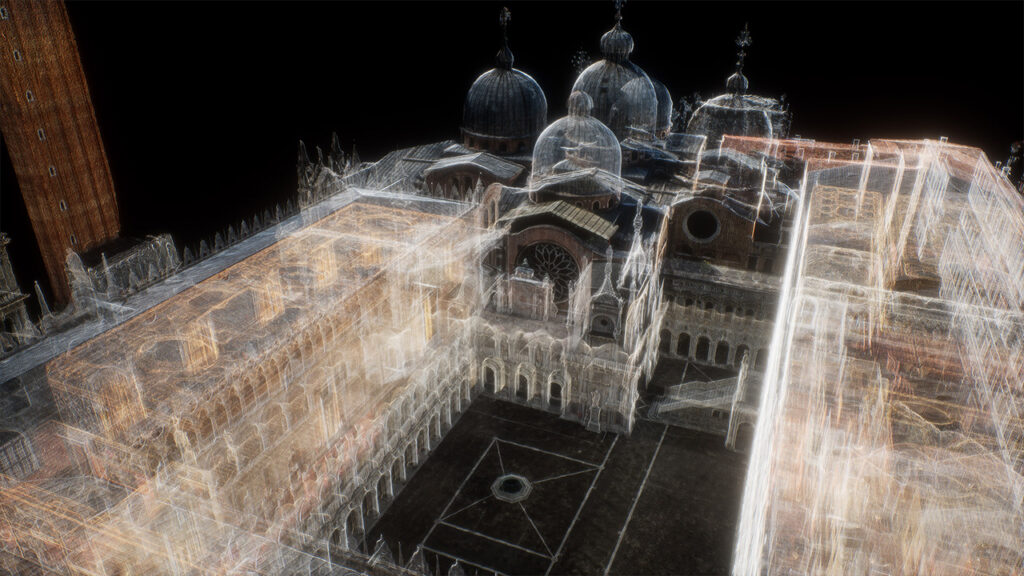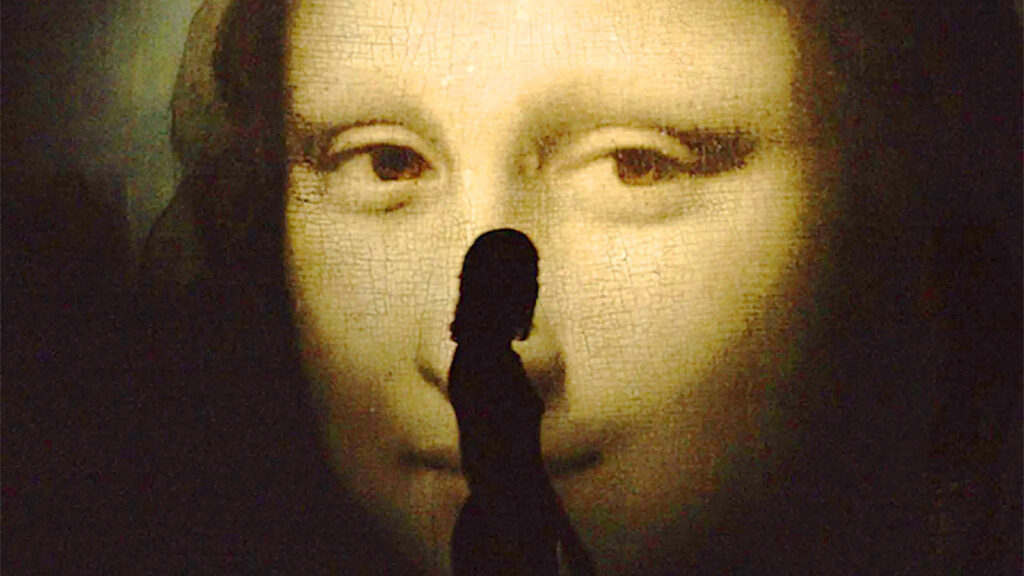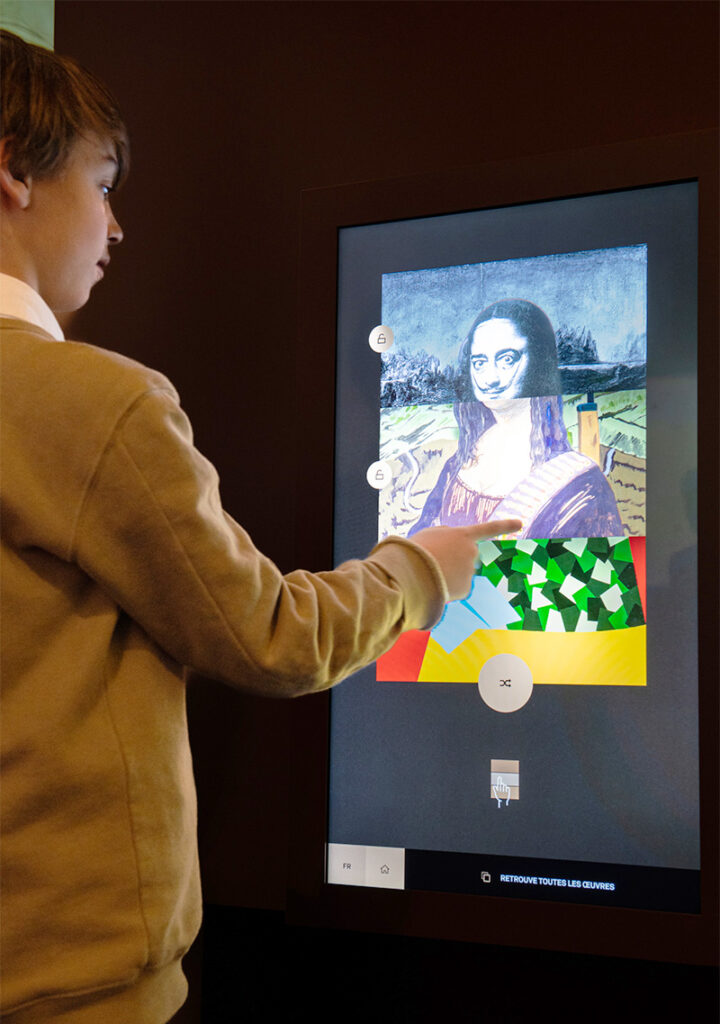Later this year, the Opéra Bastille will play host to Venice — or at least, its digital twin. From September to February 2023, the Venise Révélée exhibition will present a 3D recreation of the city of masks, offering visitors a tour of its key attractions from the Grand Canal to Palazzo Ducale, which were captured with drones and photogrammetry, as well as an interactive education in Venice’s fragile ecology. It’s a showcase that taps the cultural industry’s most bankable trend — immersion — for which the Parisian venue has landed an apt partner, Grand Palais Immersif.
The platform emerged last year as a subsidiary of the Réunion des musées nationaux – Grand Palais (RMN-GP), which programs the Grand Palais in Paris. And its objective — to produce and distribute digital exhibitions — is well-aimed and well-timed, tapping as it does the current (and ongoing) consumer appetite for immersive content. “On the one hand, we observed how technology has advanced and on the other hand, the way to be relevant to a larger audience,” says Roei Amit, Head of Digital and Multimedia at RMN-GP. “With this new format, we can continue to share art and culture with large audiences, and to fulfill our mission.”

The forthcoming Venise Révélée will present a 3D tour of the city’s key attractions, which have been newly captured with drones and photogrammetry. Image: @Presse_RmnGP on Twitter
Of course, the fact that the immersive space has grown vastly crowded is not lost on Amit. Some 40 Van Gogh-centered experiences have sprouted in the US over the past year, he notes, which is what’s driven Grand Palais Immersif to hone its value proposition. Yes, 360-degree projections are great and all, but the team aims to build upon those elements. “It’s really about immersion that serves as a vehicle for emotions,” he emphasizes, “but always going hand-in-hand with narration and information-sharing.”
A proof-of-concept is already here: earlier in March, Grand Palais Immersif and the Louvre Museum launched The Mona Lisa, An Immersive Exhibition, an ongoing installation at the Palais de la Bourse in Marseille. Naturally, projections are present, but so are six interactive applications including one inviting audiences to create their own Mona Lisa Instagram stickers and another that asks them to pick the culprit behind the 1911 theft of the painting, in a whodunnit-esque game.

“It’s really about immersion that serves as a vehicle for emotions, but always going hand-in-hand with narration and information-sharing,” says Roei Amit of Grand Palais Immersif’s mission. Image: © Mardi8, Artisans d’idées
It’s an exhibition that offers opportunities for play and interaction, Amit notes, while also serving educational purposes. Which, as he elaborates below, duly captures Grand Palais Immersif’s mission to broaden and deepen the immersive offer.
For the Grand Palais Immersif, what makes a compelling immersive digital exhibition?
For the moment, it’s experimental. When you see the fascination visitors have with big, detailed projections accompanied by catchy music, it’s compelling. We believe that we should preserve these elements, but that we should upload them with real value in the sense that the images should say and share something beyond the fact that they are beautiful. We are looking for something beyond this. Our mission is to share beauty and knowledge.
What can you share about the Grand Palais Immersif team itself?
We have a very small core team; the production team actually comes from the RMN-GP. But for each project, we gather a creative team specific to the project, which also has a different co-producer and relevant partners. [For the Mona Lisa exhibition], we’ve been working on this for several years. First of all, with the Louvre on the overall conception, before we shared the idea with different creatives until we found the right team to work with us on the actual conception of the different elements. And then we gathered around this team, including the filmmaker, the digital conceptor, and the composer.

Across the Mona Lisa exhibition are interactive installations aiming to educate visitors through play. Image: Grand Palais Immersif on Facebook
And how has the Mona Lisa immersive experience been received?
We’ve had a very satisfied public audience that sees it mostly as a family activity. It’s considered by some as perhaps less immersive than L’Atelier des Lumières because we’ve chosen not to project on the floor, for example. We have lots of interactive elements that are educational, which have been well-received by the public.
What are the main considerations that go into the design of these immersive and interactive elements?
Each project is of course a prototype and this is one of the things that is particular to what we are doing. We are not using the space in the same way from one exhibition to another. The space is not just a surface for a 360-degree linear projection; we are creating a route, a promenade. We are creating an architecture and the immersive elements are embedded in the architecture in order to create a journey. Each experience is specific to the way we construct it.
Finally, how do you see the growth of the immersive industry over the past year?
It’s more than a growth and almost like a bubble, though not as speculative a bubble as NFTs because it requires space and more money. But when you have 40 Van Gogh experiences just in the US last summer, it surely seems like a bubble in that sense. I see it as a validation of the principle that there is a new format, which is not yet stable as it develops. And actually, it’s a multi-format: there will be different types of individual formats inside this family of immersive art. I think after the Van Gogh experiences, there will emerge real content and real valuable content. We are aiming for this part where the content is really a valuable proposition for the audience.



